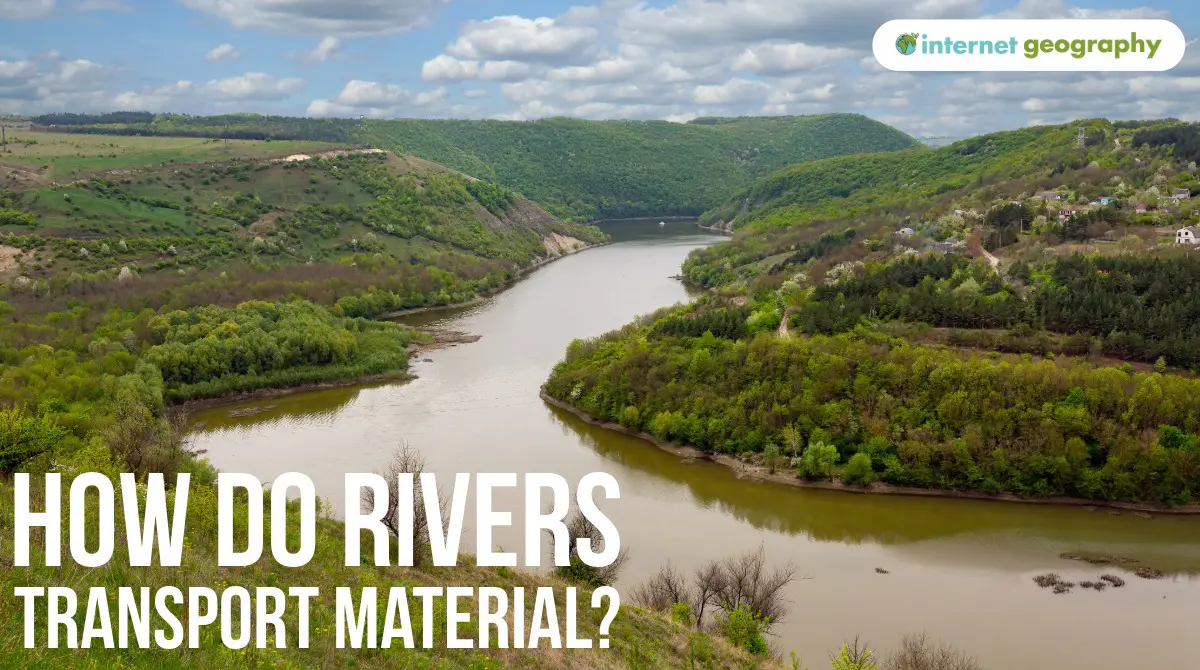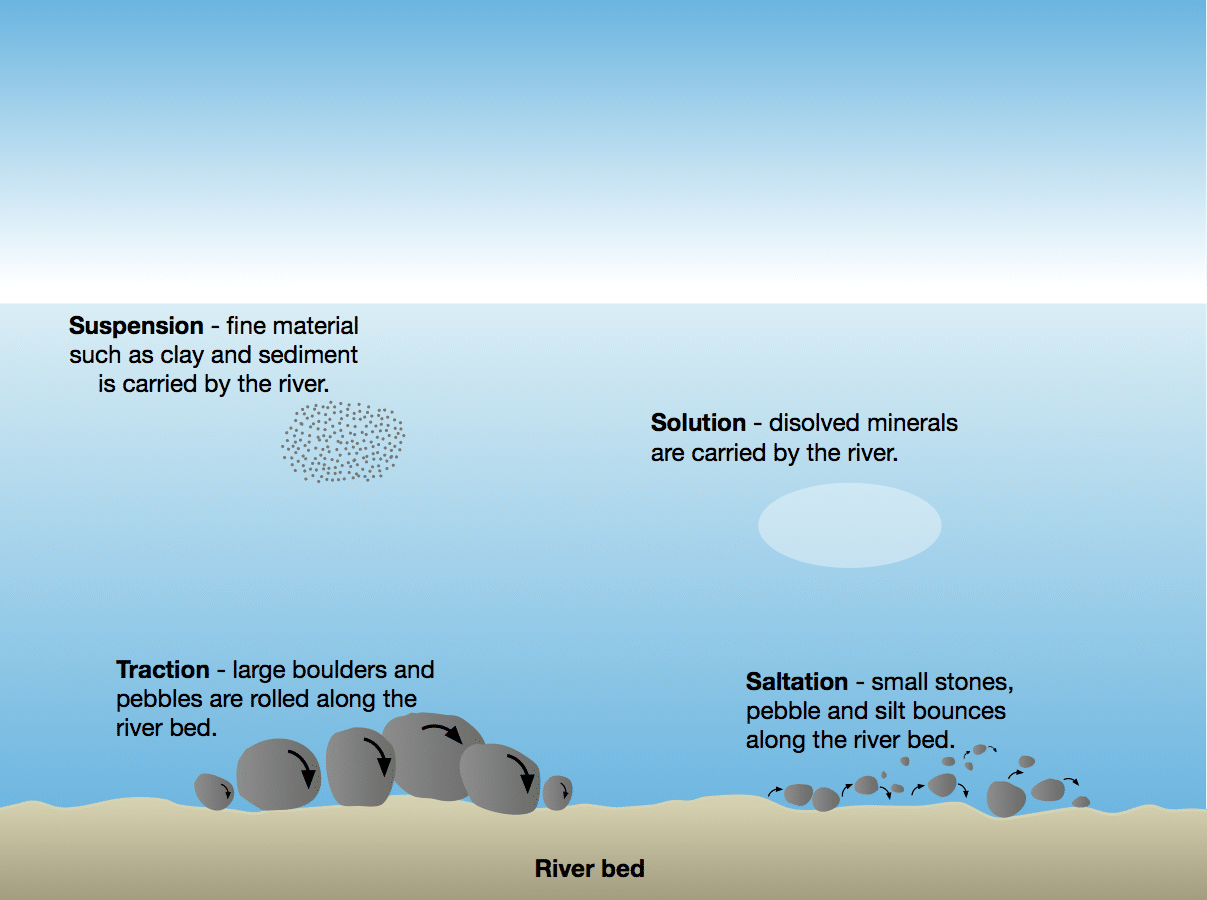How do rivers transport material?
Fluvial transport is the process by which a river carries its load. Load varies in size from large angular boulders in the upper course to fine, suspended sediment in the lower course. The load mainly comes from weathered material that has rolled down the hillside into the river bed. However, it also comes from the eroded bed and banks of the river.
Rivers transport material in four ways:
- Solution – Minerals from rocks such as chalk or limestone dissolve in the river water and are carried along in solution. This process is typical in areas with soluble rocks.
- Suspension – Fine, light particles such as silt and clay are carried along in the water. This suspended load gives many rivers a muddy or brown appearance, especially after heavy rain.
- Saltation – Small pebbles and stones are bounced or “hopped” along the riverbed by the flow of water. This happens when the river’s velocity changes, lifting and dropping the particles repeatedly.
- Traction – The largest and heaviest particles, such as boulders and large rocks, are rolled or pushed along the riverbed. This material forms part of the river’s bed load and only moves when the water has enough energy, usually during periods of high flow.
The video below shows sediment movement in a river. Notice the different types of processes of transportation at work, including traction (rolling of material over the river bed), saltation (bouncing movement), and suspension (material suspended in the water).


